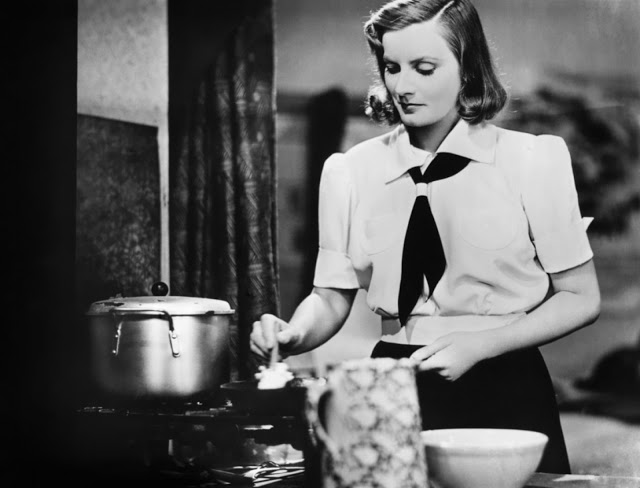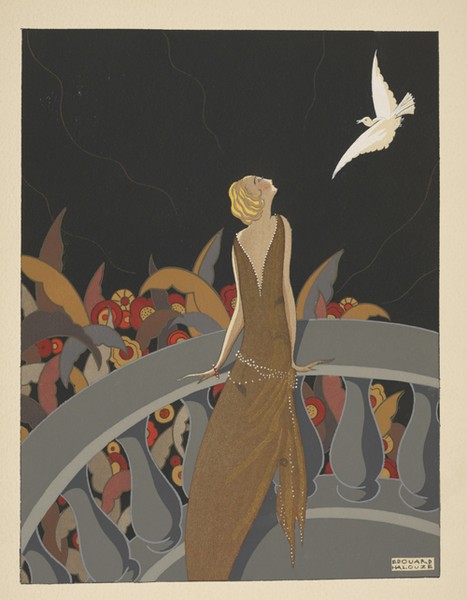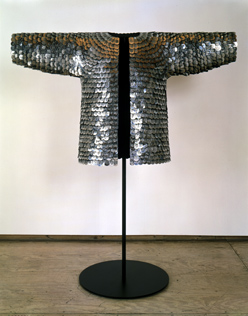Over the summer I watched about half an hour of Silk Stockings (1957), a cheesy musical remake of the Greta Garbo classic Ninotchka (1939) where the cool, efficient, and distinctly anti-fashion Soviet agent Cyd Charisse falls in love with (capitalist) Fred Astaire’s flamboyant American producer character while on a government mission in couture capital Paris. Even with my passion for cheesy musicals I could not wade through the entire film, so bad was the dialogue and music, but the on-screen mingling of economic systems and fashion appealed to me greatly. Before turning it off, I did have the pleasure of seeing the namesake silk stocking dance solo performed by Ms. Charisse, a signal of her having fallen in love with Astaire and — not coincidentally — (capitalist) high fashion:
You can see she’s hidden various luxurious items — most of which are silky intimates — around her room, so ashamed is she of having been seduced by luxury goods. It’s a wistful number reminiscent of other more famous musical movies scenes like frumpy Audrey Hepburn singing “How Long Has This Been Going On?” while dreamily dancing around in an ostentatious hat left over by the fashion photo shoot in which she’d been forced to participate in Funny Face (from 1957 as well):
Or Anne Margaret’s “How Lovely to be a Woman” in Bye Bye Birdie (1963):
Or Natalie Wood in West Side Story (1961) singing “I Feel Pretty” and dancing in the dress shop where she works:
You’ll notice that all these were filmed in the late 1950s — the decade of hyper femininity in silhouettes — and early 1960s — the decade when sexuality and gender roles were being questioned more openly. What differentiates Silk Stockings from the other scenes I’ve grouped here (perhaps excepting Funny Face) is the heavy political overtones emphasized over a simple coming-of-age-as-a-woman, though all involve dress-up as experimentation. Though a love story, it’s also about a Commie Russian woman resisting capitalistic inclinations who is ultimately seduced by the capitalist-produced clothes (the relationship with Fred Astaire is curiously tepid, further shifting the emphasis away from the human relationship). What the clip unfortunately omitted was Cyd Charisse seated next to a framed Lenin photo which she puts down to slowly discard her drab green dress (it’s supposed to be drab, though I think it’s quite lovely in its simplicity), black tights and sensible shoes for silk stockings, lace negligee and white sparkly mules.
I too struggle with my collector’s urges to accumulate (not the least of my obsessions is clothes), and my political / social ideology, which is opposed the stockpiling and hoarding tendencies Americans are told is our right — and more than that, a measure of success in obtaining the capitalist dream. Following this train of thought leads to even larger questions concerning labor rights and ethical practices within the fashion industry which has, as Silk Stockings exemplifies, been a symbol of tremendous creative and technological achievements as well as a hideous exploitative industry ever since the Industrial Revolution and the concurrent birth of Marxism.
I have an article examining the relationship of Communism, capitalism, fashion and film in far more depth in an upcoming edition of Worn Fashion Journal.





























